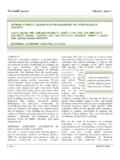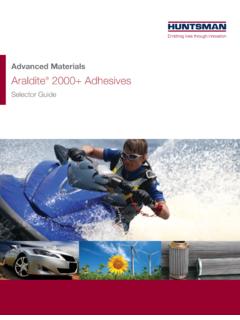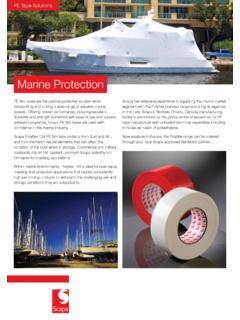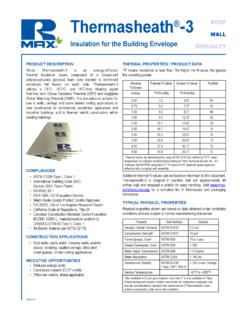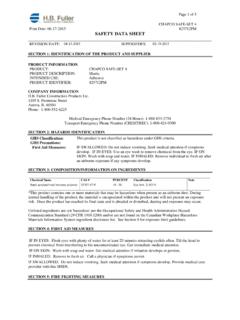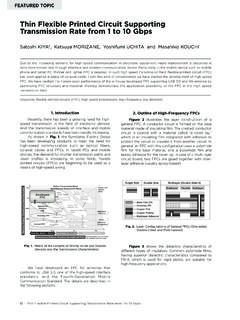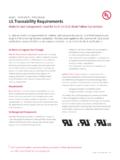Transcription of GREEN DESIGN AND SUSTAINABILITY IN SPORT …
1 The SMART Journal Spring/Summer 2008 Volume 4, Issue 2 Page 26 INTRODUCTION SPORT and recreation organizations have traditionally attempted to construct functional and innovative facilities to meet the needs of patrons. Over the past few decades, the concepts of GREEN DESIGN and SUSTAINABILITY have evolved as a mechanism to deal with limited resources and reduce the impact on the environment (Kessenides, 2005). Architects, engineers, and consultants have begun practicing social responsibility by incorporating GREEN DESIGN concepts and technologies for their client s projects.
2 SPORT and recreation professionals can benefit by gaining an understanding of the potential benefits of GREEN DESIGN and SUSTAINABILITY . This article is an attempt to answer many of the commonly asked questions related to the DESIGN , construction , and maintenance of GREEN facilities. DEFINING GREEN AND SUSTAINABILITY A GREEN or sustainable facility is a structure designed, built, renovated, or operated in an ecologically and resource-efficient manner (Dick, 2007). These buildings often utilize energy-efficient processes to accomplish long-term cost savings (Yost, 2002) SUSTAINABILITY has also been defined as a holistic approach to protecting the environment by incorporating DESIGN practices and materials that use energy most efficiently (Fried, 2005, ).
3 Sustainable initiatives work with the environment rather than against it (Suttell, 2006). GREEN buildings can be designed to protect occupant health, improving employee productivity, utilize resources more efficiently, and reduce environmental impacts (Environmental Building News, 1999). GREEN FACILITY BENEFITS Ries and Bilec (2006) suggest three possible benefits of GREEN facility construction : 1) conservation of natural resources, 2) increased energy efficiency and water conservation, and 3) improved indoor environment.
4 They suggest GREEN DESIGN can lead to substantial cost-savings over the life-span of a building and improve productivity for the building s inhabitants. These potential benefits are discussed in the following sections. NATURAL RESOURCE CONSERVATION The efficient use of natural resources is a fundamental tenet of GREEN DESIGN . Conventional construction practices consume large quantities of steel, wood, plastic, cardboard, paper, water, and other natural resources that unnecessarily lead to resource depletion (del Monte, 2006).
5 DESIGN professionals have the option to select environmentally-conscience building materials such as recycled products. Reutilization of beams, lumber, flooring, paneling, doors, brick, steel, insulation, and other products often lend quality and durability exceeding ISSUES IN PRACTICE MANAUSCRIPT GREEN DESIGN AND SUSTAINABILITY IN SPORT AND RECREATION FACILITIES FRED GIBSON, PHD, WESTERN KENTUCKY UNIVERSITY JEFFREY LLOYD, MS, INDIANAPOLIS COLTS SONYA BAIN, MS, SOUTHEAST MISSOURI STATE UNIVERSITY ATHLETICS DEREK HOTTELL, MS, SEATTLE UNIVERSITY RECREATIONAL sports The SMART Journal Spring/Summer 2008 Volume 4.
6 Issue 2 Page 27 conventional materials (del Monte, 2006). Sustainable construction products can also include recycled plastics and crushed rock aggregates ( GREEN Building Council, 2007). The rapidly developing recycled product market is also diverting waste from landfills as mandated by the Integrated Waste Management Act (Environmental Management, 2007). Designing adequate space for recycling collection and incorporating a solid waste management program can reduce waste generation over the lifespan of facility.
7 ENERGY EFFICIENCY AND WATER CONSERVATION Energy efficiency and water conservation are cornerstones of any GREEN building project. Generation and use of energy are major contributors to air pollution and global climate change. Improving energy efficiency and using renewable energy sources are effective ways to reduce the potential of energy supply interruptions, improve air quality, and reduce the impacts of global warming (Ries & Bilec, 2006). Lowering utility expenses allows organizations to reap the financial benefits of SUSTAINABILITY on a continual basis.
8 Examples of increased energy efficiency measures include installing top grade insulation, glazed and low-emissive (low-E) double-paned windows, and high-efficiency water heaters and other appliances (Ries & Bilec, 2006). LaRue, Sawyer, and Vivian (2005) describe how the building envelope the windows, doors, walls, floor, foundation, and roof must balance requirements for ventilation with providing thermal and moisture protection appropriate to a facility s climatic conditions: The role of mechanical systems and purchased energy is to make up the difference between that which the envelope can provide in occupant comfort and what is [therefore the] quality of the envelope, then, is a major factor in determining energy used for heating, cooling, lighting, and ventilation.
9 Improvements to the envelope can significantly reduce energy demand. (p. 172) An optimal designed building envelope provides significant reductions in heating and cooling loads, which in turn can allow downsizing of heating, ventilation, and air-conditioning (HVAC) equipment (Loftness, Hakkinen, Ada, & Nevalainen, 2007). Large volumes of water are often consumed at recreation and SPORT venues making water conservation an import issue. Builders can take advantage of a new generation of high-efficiency appliances and landscape water management systems (Dick, 2007).
10 Dual plumbing using recycled water for toilet flushing or a gray water system that recovers rainwater or other non-potable water for site irrigation are efficient methods of water conservation. Wastewater can be minimized by using ultra low-flush toilets, low-flow shower heads, and other water conserving fixtures (Dick, 2007; LaRue et al., 2005). Additional measures such as reminding patrons to turn faucets off completely, repairing drips and leaks, and shutting down water supplies outside of operating hours can go a long way toward conservation and cost reduction (LaRue et al.)
